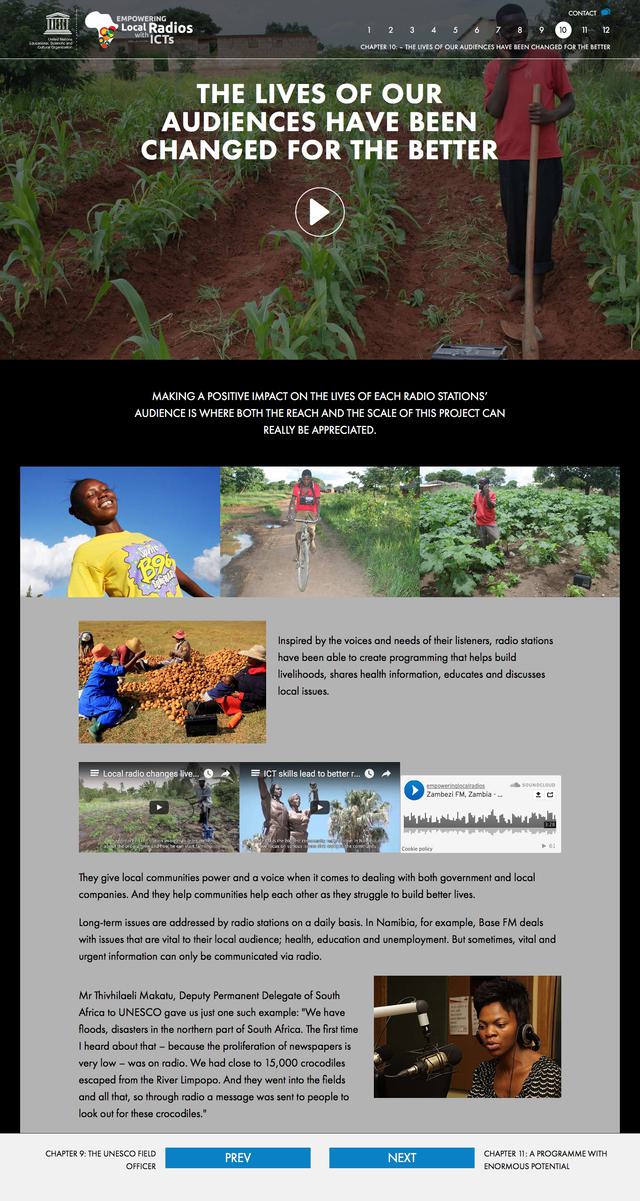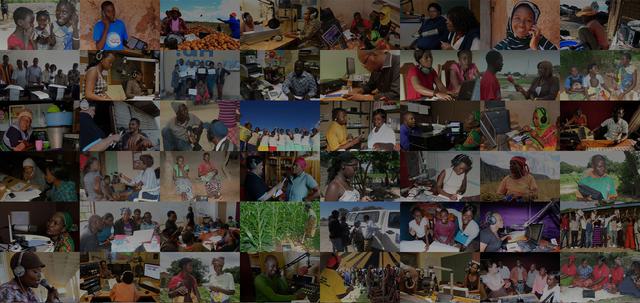UNESCO: Empowering Local Radios with ICTs
- Exhibited by
- Addition by WPN Chameleon
- Added
- June 22, 2017
- Medium of Communication
- Online
- Target Audience
- International Development Agencies, NGOs
- Type of Charity
- International Development
- Country of Origin
- France
- Date of first appearance
- 13 February 2016
SOFII’s view
UNESCO targeted potential funders of their local radio project in Africa with this immersive digital storytelling experience. It’s a unique way to showcase the effectiveness and impact of this empowering work and a great use of the wealth of local source material available.
Summary / objectives
UNESCO (United Nations Educational, Scientific and Cultural Organisation) wanted to engage their target audience with a unique and innovative visitor experience to highlight their project ‘Empowering Local Radios with ICTs’, which supports and demonstrates the transformative power of local radio in Africa. Digital product studio Addition (part of WPN Chameleon) created an immersive digital storytelling experience with a compelling narrative aimed at connecting the target audience with the impact of the project.
Background
In developing countries, local radio is a crucial communications channel for discussion and change on issues such as education, politics, human rights and women’s issues. UNESCO has supported 32 radio stations in seven countries across sub-Saharan Africa since 2012. But radio stations are often held back by insufficient skills and knowledge in information and communications technology (ICT), which means they are unable to reach everyone who may benefit from their shows.
In order to create great broadcasts and grow interaction with audiences, UNESCO provided the people operating those stations – managers, producers, technicians, correspondents – with ICT skills and equipment through the Empowering Local Radios with ICTs initiative.
The initiative has helped radio stations improve ICT capabilities to stimulate public debate, engage communities around local issues, promote gender equality and change people's lives. However, UNESCO needed a way to showcase the success of the project and demonstrate impact to supporters and funders.
Special characteristics
UNESCO worked collaboratively with the Addition team and shared a wealth of excellent audio-visual content provided by the initiative’s contributors. This helped generate lots of different ideas, leading to an immersive storytelling solution with a compelling narrative at its heart that would connect the target audience – funders such as international development agencies and NGOs – with the impact of the project on local communities.
Of course, any potential funder would need more in-depth material, such as detailed impact reports, to make a funding decision. So, before providing that next level of detail, the team planned a storytelling experience to capture the inspirational essence of the project and spark the funder’s interest in the impact of the project.
Both teams – Addition and UNESCO – worked together to shape the experience using audience insight, storyboarding, copywriting, iterative design, creating prototypes and technical build.
Influence / impact
The success of this project needed to be shared. We wanted to use digital media in an unconventional way for the sector, telling a story that would engage the audience and make them want to find out more and participate.
Mirta Lourenço, chief of media development and society section, UNESCO
Results
The project was launched on 13 February 2016 - World Radio Day – and is a great example of how a close collaboration between client and product studio, with a tight focus on the core concept and purpose of the product itself, can produce an exceptional result.
Also in Categories
-





















